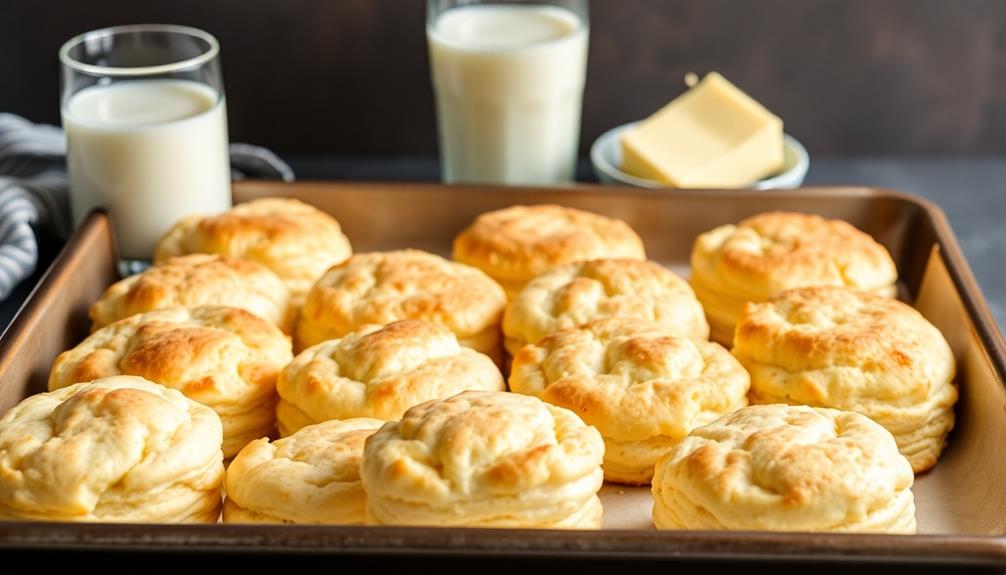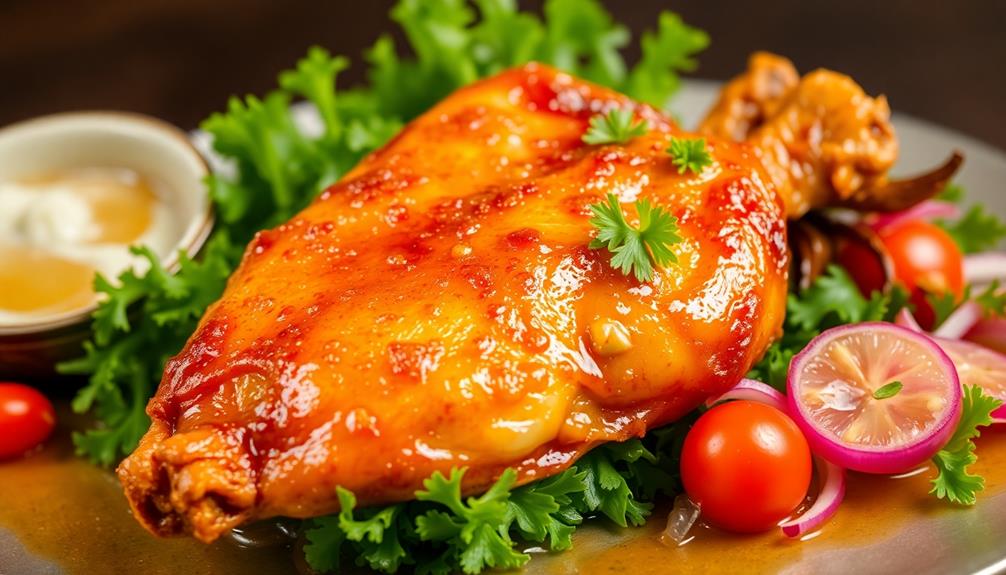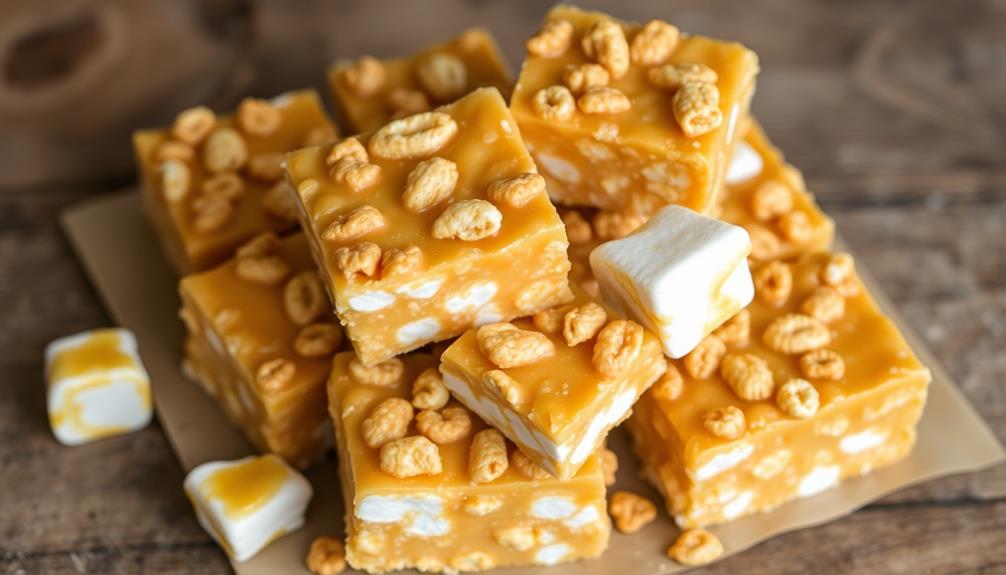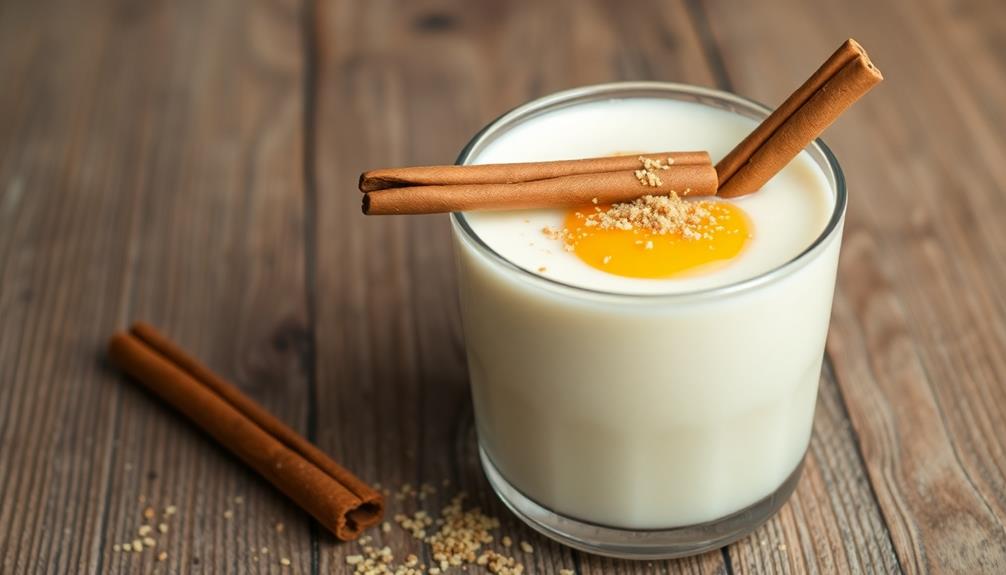Making your own buttermilk at home is a cinch! Just combine whole milk and an acid like lemon juice or vinegar, let it curdle, then strain it. You'll end up with a tangy, versatile ingredient that's perfect for baking tender biscuits, marinating meats, or whisking into salad dressings. Feel free to experiment with the milk-to-acid ratio to get the thickness you prefer. Homemade buttermilk offers full control over the flavor and consistency, so dive in and start exploring its many culinary uses.
Key Takeaways
- Make homemade buttermilk using just two ingredients: whole milk and an acidic ingredient like lemon juice or vinegar.
- Combine the milk and acid, let the mixture sit for 5-10 minutes to thicken, then strain to separate the buttermilk.
- Use the homemade buttermilk immediately for best flavor and texture, as it has a short shelf life.
- Incorporate homemade buttermilk into recipes for tender baked goods, tangy marinades, and flavorful salad dressings.
- Experiment with the milk-to-acid ratio to achieve the desired buttermilk consistency for your culinary needs.
History
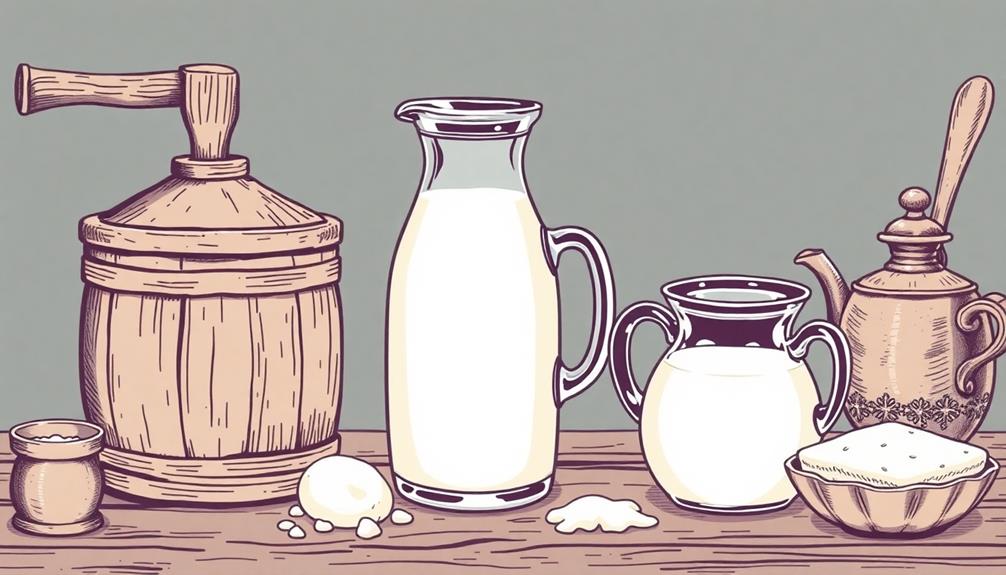
Buttermilk has a rich history, dating back to ancient times when it was a by-product of the butter-making process. Before modern refrigeration, farmers would use the leftover liquid from churning butter as a refreshing drink and a way to preserve dairy products.
Over time, buttermilk became a staple ingredient in many traditional dishes, from pancakes to biscuits.
Today, while you can easily find store-bought buttermilk, making your own at home allows you to control the flavor and consistency. The process is surprisingly simple, often just requiring milk and a bit of vinegar or lemon juice.
Homemade buttermilk has a tangy, slightly sour taste that adds depth to your cooking. Whether you're baking, marinating, or using it as a drink, this versatile ingredient can elevate your culinary creations.
With a few basic steps, you can enjoy the rich history and flavor of homemade buttermilk right in your own kitchen.
Recipe
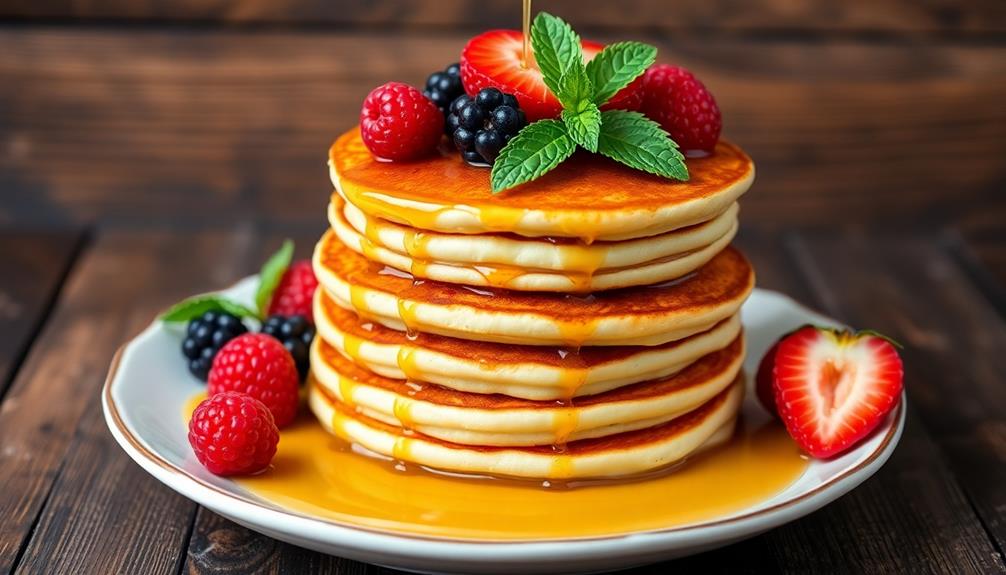
Making homemade buttermilk is a straightforward process that can elevate your baking and cooking. This versatile dairy product adds a delightful tangy flavor and tender texture to a variety of dishes.
Whether you're whipping up flaky biscuits, moist cakes, or marinating meats, having homemade buttermilk on hand can make a world of difference.
The best part is that you can easily make buttermilk at home with just a few simple ingredients. This recipe will guide you through the steps to create your own batch of this kitchen staple.
- Whole milk
- Lemon juice or white vinegar
In a clean glass or non-reactive container, combine 1 cup of whole milk with 1 tablespoon of lemon juice or white vinegar. Stir gently and let the mixture sit at room temperature for 5-10 minutes, or until it thickens and curdles.
Once the milk has cultured, it's ready to use in your favorite recipes.
It's important to note that the consistency of the homemade buttermilk may vary slightly from store-bought versions, but the flavor profile will be remarkably similar.
Additionally, you can experiment with different ratios of milk to lemon juice/vinegar to achieve your desired thickness. Remember, the longer the mixture sits, the more it will thicken.
Cooking Steps
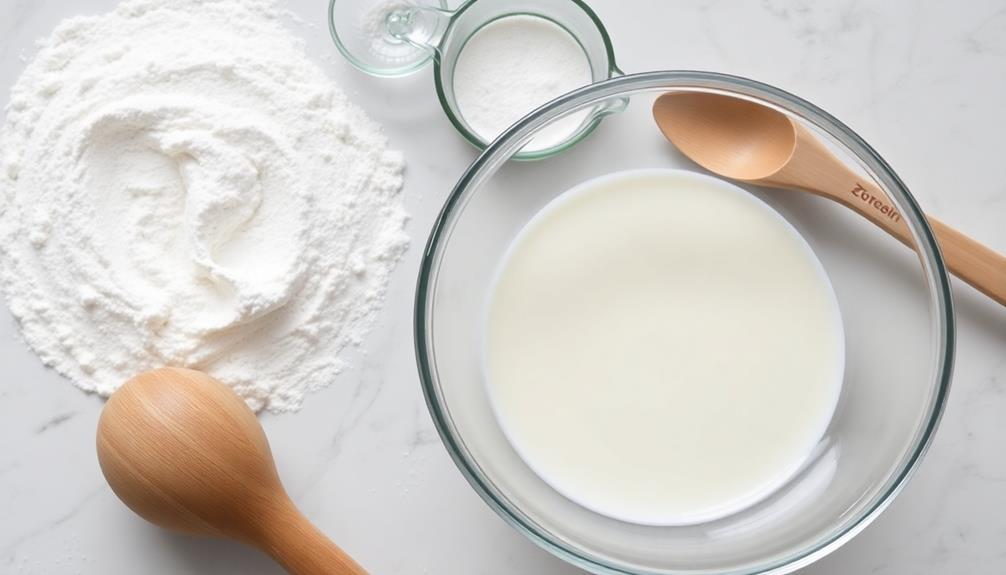
To make your own buttermilk, first add milk and lemon juice to a bowl, then let the mixture curdle.
Next, strain the curdled mixture through a fine-mesh sieve to separate the buttermilk.
Step 1. Add Milk and Lemon Juice
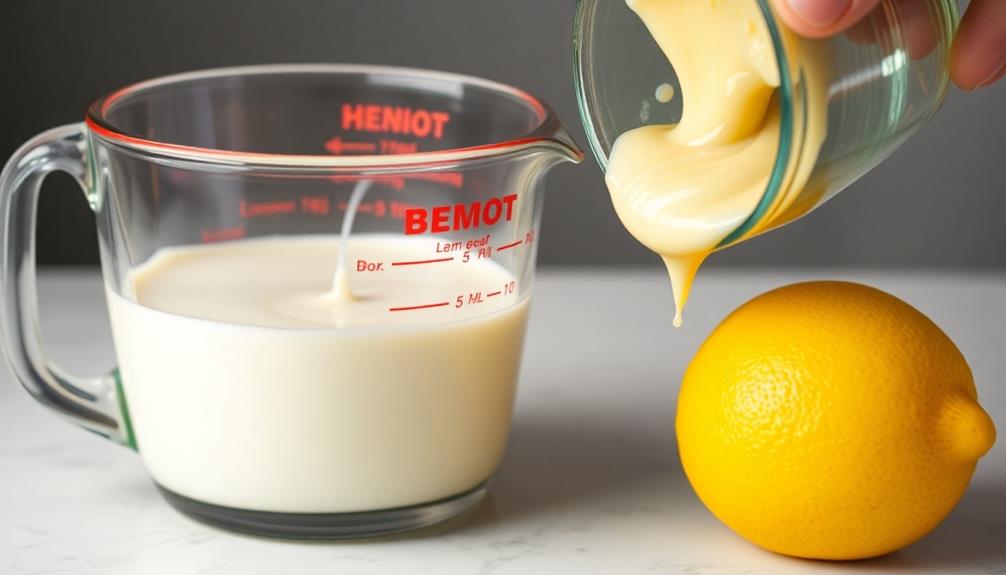
The next step in your homemade buttermilk journey involves adding milk and lemon juice.
Start by pouring your desired amount of milk into a clean container – whether it's whole, 2%, or skim, any type of milk will work.
Now, it's time to add the lemon juice. The ratio is typically 1 tablespoon of lemon juice per 1 cup of milk. Measure out the lemon juice and slowly pour it into the milk, stirring gently as you go.
You'll notice the milk start to curdle and thicken, which is exactly what you want. Continue stirring until the mixture has a slightly lumpy, buttermilk-like consistency.
The acidic lemon juice reacts with the milk, causing it to curdle and develop that classic buttermilk flavor and texture.
Once you've reached the desired consistency, your homemade buttermilk is ready to use in your favorite recipes or enjoy on its own.
Just be sure to refrigerate it until you're ready to use it.
Step 2. Let Mixture Curdle
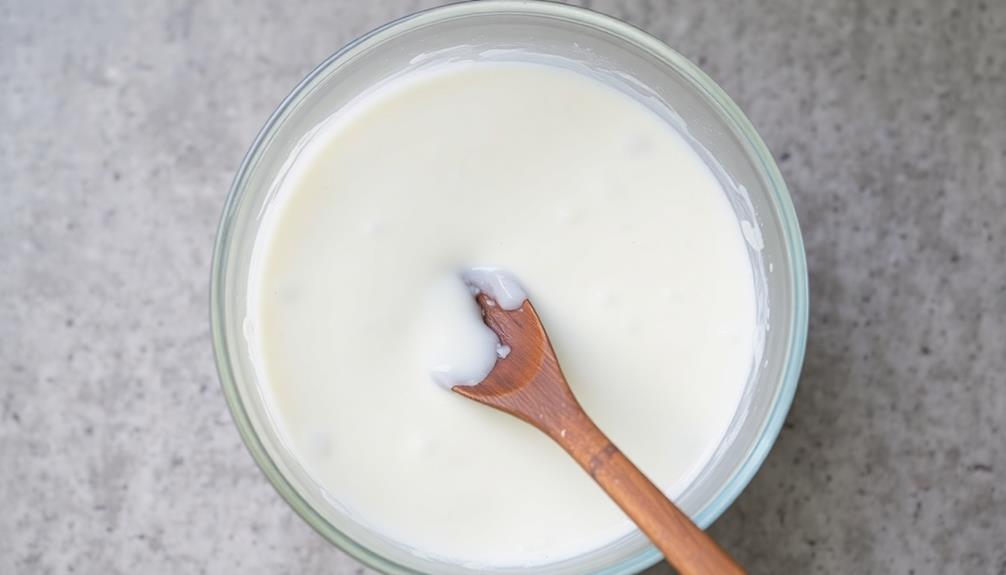
Once you've combined the milk and lemon juice, let the mixture sit for about 5-10 minutes.
This is the crucial step where the milk will curdle and transform into the thick, tangy buttermilk you need.
Don't be alarmed when you see the milk start to separate – that's exactly what you want! The acidic lemon juice causes the milk proteins to coagulate, creating the classic buttermilk texture.
As the mixture rests, you'll notice the liquid portion become slightly thinner and more translucent, while the solids form little curds.
This is a good sign that the process is working.
Once the full 5-10 minutes have passed, your homemade buttermilk is ready to use.
The longer you let it sit, the thicker and more pronounced the flavor will become.
Just be sure not to let it go for too long, or the texture may become too dense.
With a little patience, you'll have perfect buttermilk in no time!
Step 3. Strain the Curdled Mixture
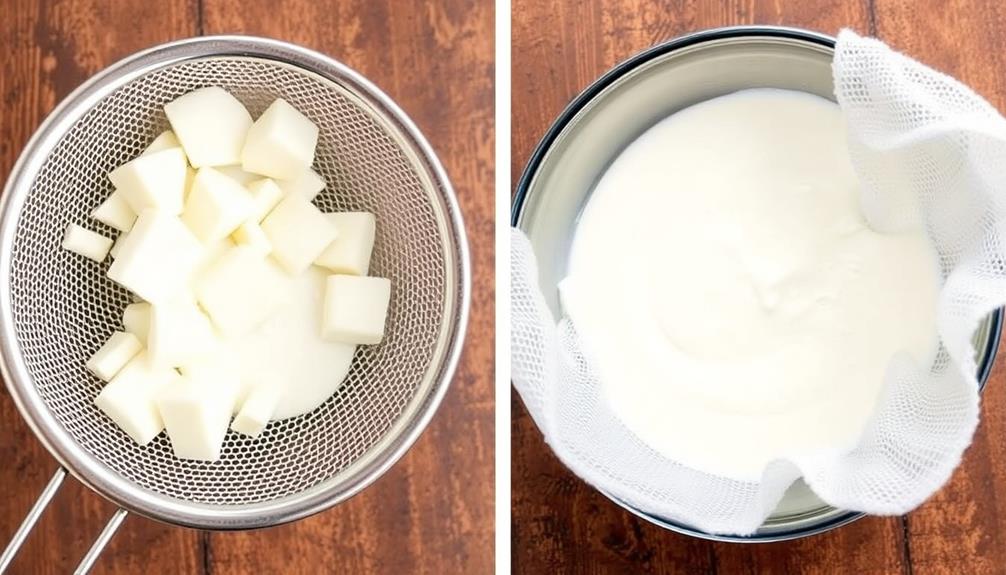
After the milk has curdled, you'll need to strain the mixture to separate the liquid buttermilk from the solids.
Grab a fine-mesh strainer or cheesecloth and place it over a clean bowl. Carefully pour the curdled mixture into the strainer, allowing the buttermilk to drain through. Don't worry if some small curds pass through – this is normal.
Once the majority of the liquid has drained, you can gently press on the solids with the back of a spoon to extract even more buttermilk.
Be careful not to press too hard, or you might break up the curds. Discard the remaining solids, as they won't be used for this recipe.
Congratulations! You now have freshly strained buttermilk, ready to be used in your favorite recipes.
The buttermilk will have a slightly tangy and rich flavor, perfect for baking or as a marinade. Store it in an airtight container in the fridge for up to a week, and enjoy your homemade buttermilk creation.
Step 4. Refrigerate the Strained Buttermilk
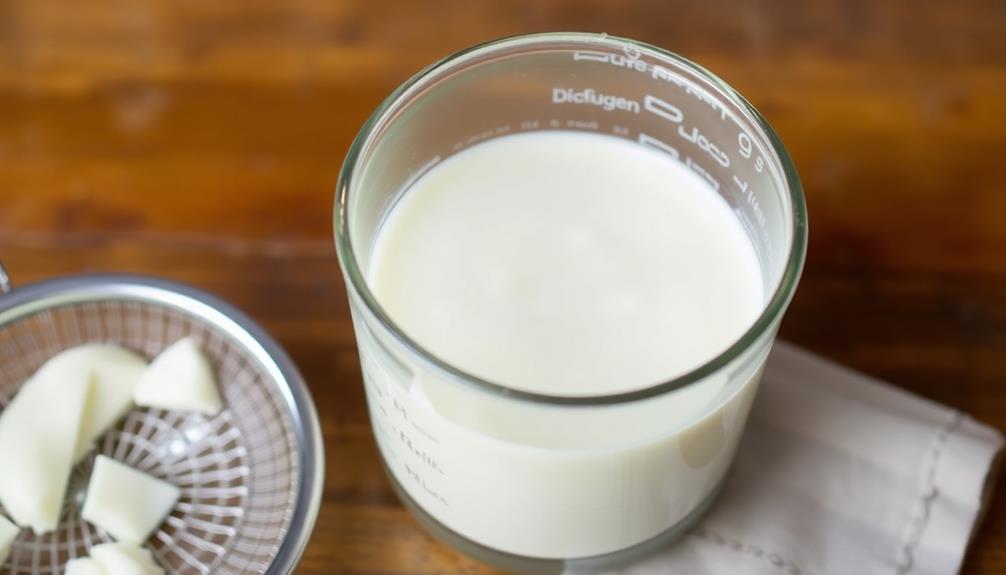
Your freshly strained buttermilk is now ready for storing. Grab an airtight container, like a mason jar or a clean, empty milk carton.
Carefully pour the buttermilk into the container, leaving a little space at the top. Seal the container tightly, and pop it into the refrigerator.
Refrigerated buttermilk will keep for 7-10 days. Be sure to give it a quick stir before using, as the liquid and solids may separate a bit.
You can use your homemade buttermilk just like the store-bought kind – it's perfect for baking, in marinades, or even drizzled over fruit.
When you're ready to use it, simply open the container and measure out what you need. The rest will stay fresh and ready to go.
Enjoy your homemade buttermilk, and feel proud of your kitchen skills!
Step 5. Use Buttermilk Immediately
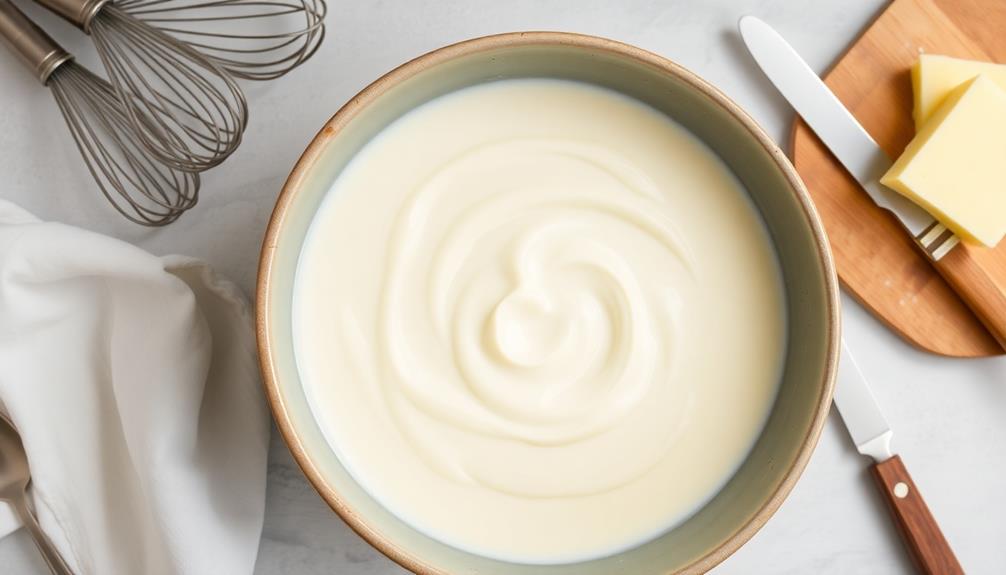
Having refrigerated your homemade buttermilk, you're now ready to put it to use. Unlike store-bought buttermilk, which can sit in the fridge for weeks, your fresh homemade version is best used right away. The live cultures and tangy flavor will start to diminish over time, so don't wait too long to enjoy it.
Buttermilk is a versatile ingredient that can be used in all sorts of recipes, from baked goods to marinades. Try adding it to your favorite pancake or biscuit batter for a delightfully tender and tangy result. You can also use it to tenderize meats or create a tasty dressing for salads.
Final Thoughts
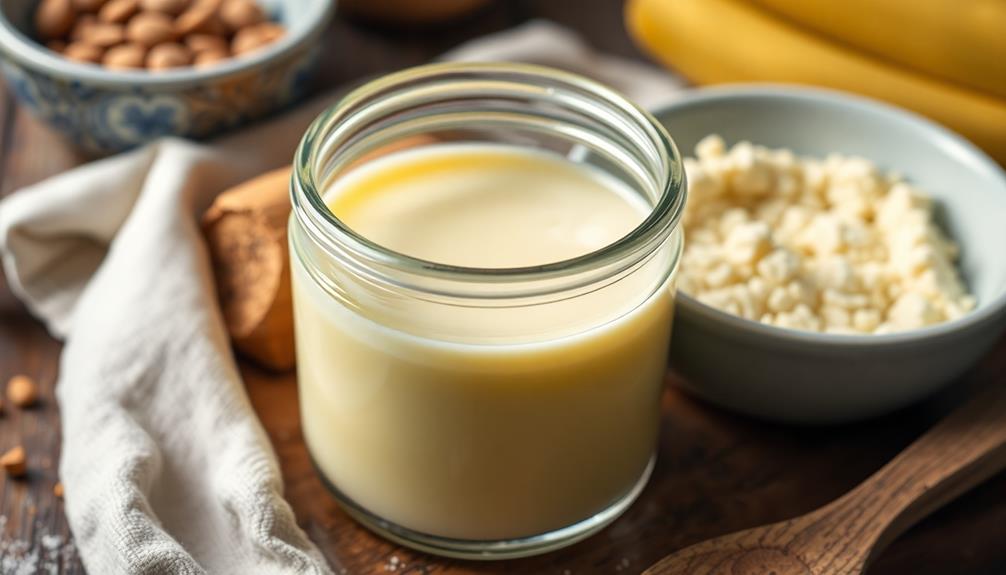
Buttermilk is a versatile ingredient that can add depth and richness to a variety of dishes. Whether you're whipping up tender biscuits, tangy salad dressings, or moist cakes, having homemade buttermilk on hand is a game-changer.
The best part? It's incredibly easy to make! All you need is some milk and a few simple ingredients.
Now that you've learned how to create your own buttermilk, don't be afraid to experiment. Try swapping it in for regular milk in your favorite recipes and see how it transforms the flavors.
The slightly tangy, creamy character of buttermilk can really elevate your cooking. And don't forget, it has a relatively short shelf life, so be sure to use it up quickly for the best results.
Homemade buttermilk is a kitchen staple that's well worth the minimal effort. With this guide, you'll be a buttermilk master in no time, whipping up all sorts of delicious dishes that'll have your family and friends asking for more.
Frequently Asked Questions
Can I Substitute Regular Milk for Buttermilk in Recipes?
You can substitute regular milk for buttermilk in recipes, but the results won't be the same. Buttermilk adds a distinctive tangy flavor and helps tenderize baked goods. If you don't have buttermilk, consider making a quick version using milk and lemon juice or vinegar.
How Long Does Homemade Buttermilk Last in the Fridge?
Homemade buttermilk typically lasts 7-10 days in the refrigerator. The acidity of the buttermilk helps preserve it, but it's best to consume it within this timeframe for optimal freshness and flavor.
Can I Freeze Leftover Homemade Buttermilk?
You can absolutely freeze leftover homemade buttermilk. Just pour it into an airtight container, leave some headspace for expansion, and it'll keep in the freezer for up to 3 months. Thaw in the fridge before using.
Why Is My Homemade Buttermilk Too Thin or Too Thick?
Your homemade buttermilk may be too thin or too thick depending on the ratio of milk to buttermilk culture you used. Adjust the amount of culture next time to achieve the desired thickness.
Can I Use Store-Bought Buttermilk to Make Homemade Buttermilk?
You can use store-bought buttermilk to make your own homemade version. Simply add it to milk and let it sit until it thickens to the desired consistency. This method can help you achieve the perfect buttermilk texture.

